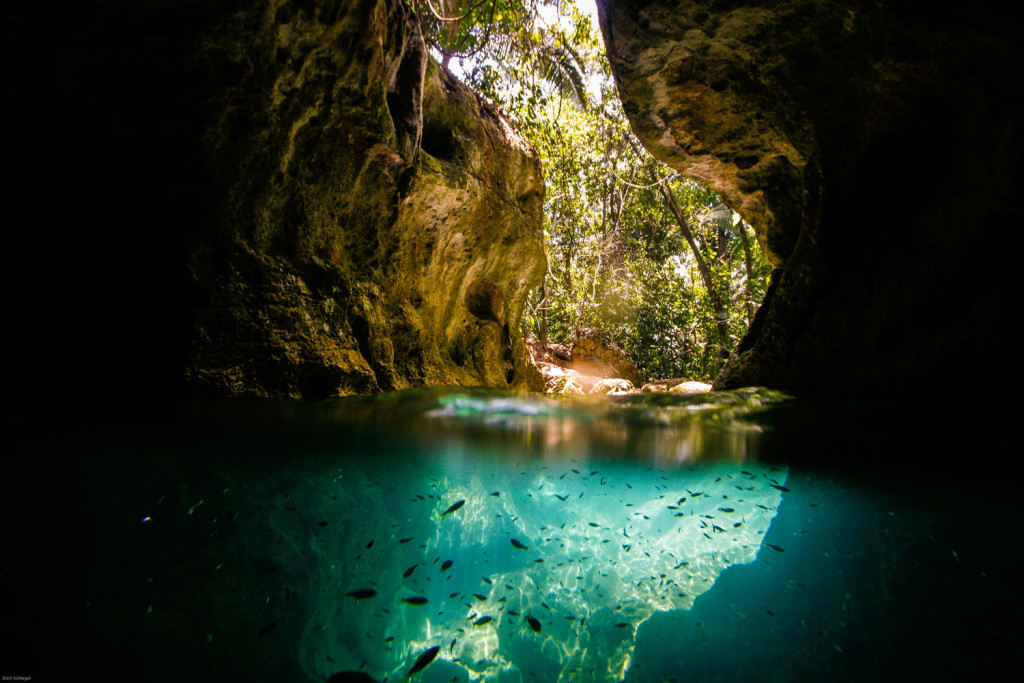While no one knows the original name of the cave, today it is called Actun Tunichil Muknal (ATM) Cave from a Maya term meaning “Cave of the Stone Sepulcher”. Sometimes referred to as the Cave of the Stone Altar, ATM is a complex underground network of tunnels that lead to one of the most important historic sites ever discovered. Containing over 1,400 artifacts from the end of the Ancient Maya Empire that have lain undisturbed for more than a millennium, the ATM cave was once used by priests to conduct human sacrifices at a time of drought, warfare, and civil strife.
The entrance to ATM Cave is protected by a deep pool of cool water that visitors must traverse by swimming. Once inside, the cave opens up to a series of enormous stalactites and stalagmites. The first indication of the cave’s religious importance is a large stone altar carved from a stalactite with a stingray spine as its centerpiece, the altar or sepulcher that gave the cave system its current name. All around the altar lie potsherds, bone fragments, relics and other artifacts left behind by the Maya priests more than a thousand years ago.
Further in, towards what the Ancient Maya believed was the sacred nexus where the underworld of the gods connected to the world of men, lie the bones of the Crystal Maiden. This sacrificial victim, estimated to be a young adult in their 20s, has, over time, bonded with the minerals in the cave to acquire a glittery sheen. Nearby lie the remains of seven adult sacrificial victims as well as those of five children all under the age of 5. Thousands of fragmented pots and vessels are scattered near the bones, including some largely-intact pots and bowls that archeologists believe once held food offerings to appease the gods. Other artifacts include the obsidian blades that are believed to have been used in the solemn but gruesome human sacrifices conducted by Maya priests.
Archeologists have estimated that the ATM cave first became a site used by the Maya for religious purposes nearly 2,000 years ago. The most recent remains are dated to the Terminal-Classic Period (roughly 800 to 1000 AD), a time when the Maya heartland was suffering from severe drought and civil wars. Forgotten for more than a thousand years, the ATM cave was rediscovered in 1989 by local archeologists.
Due to the fragile nature of the artifacts within, only guides authorized by the Department of Archeology can access the ATM Cave. At Chabil Mar, we offer guests guided tours of this unique historical site in Belize. Our concierge would be very pleased to make those arrangements for a visit there for you.













